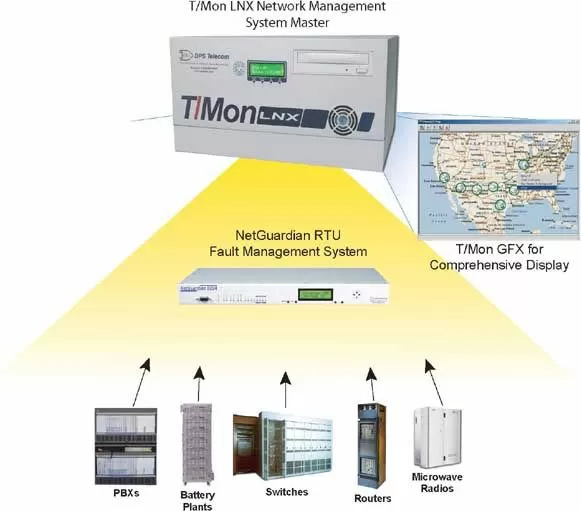Check out our White Paper Series!
A complete library of helpful advice and survival guides for every aspect of system monitoring and control.
1-800-693-0351
Have a specific question? Ask our team of expert engineers and get a specific answer!
Sign up for the next DPS Factory Training!

Whether you're new to our equipment or you've used it for years, DPS factory training is the best way to get more from your monitoring.
Reserve Your Seat TodayTo prevent network downtime and equipment failures (and minimize recovery time when these events do happen), it is necessary to have a robust fault monitoring system. The ISO Network Management Model lists Fault Monitoring as one of the five key functional areas of network management and defines it as the ability to "detect, isolate, notify, and correct faults encountered in the network."

These four things require a robust system for remote telemetry. Even the most experienced network administrator can't be everywhere at once, and, often times, some network sites will be left unmanned alltogether. To detect faults that would otherwise go unnoticed, a network management system must employ a remote telemetry system to detect faults and notify the appropriate technicians before faults become broken equipment or extended network downtime. DPS Telecom manufactures a number of NetGuardian remote telemetry units (RTUs) built specifically for this purpose.
RTUs (ex. DPS Telecom's NetGuardian series) detect network status using a series of "alarm inputs" and relaying this information either directly to remote technicians or to a Network Operations Center. This enables the appropriate personnel to take action before a minor fault becomes a major one. These RTUs support both binary sensors, which check for binary function (i.e. on or off, open or closed), or analogs, which display a range of values by measuring and referencing voltage or current. Analog sensors are used for measuring things such as temperature or humidity (environmental data) that could be useful to remote technicians.
To isolate and correct fault, it is necessary for RTUs to have a number of controls, sensors that allow the user to operate certain equipment remotely, giving technicians a number of options to deal with potential faults without having to travel to their remote sites. With controls, a technician can lock or unlock doors, power-down or reset equipment. It's important to note that controls don't replace technicians, but rather equip them to effectively handle those problems that shouldn't require a visit to a remote site.
While NetGuardian RTUs can be used alone, accessed using their web interface, it may benefit you to manage your fault detection system with a T/Mon as your network and fault detection needs grow. T/Mon is an SNMP aggregator, an interface for managing all of your RTUs through a single interface. This organizes alarms and notifications, and gives network administrators a comprehensive view of the health of their network.
To guard against expensive downtime and otherwise preventable equipment failure, implement a robust system for fault detection. For information on DPS Telecom's RTUs, customizable for your fault detection application, see the NetGuardian Product Line.